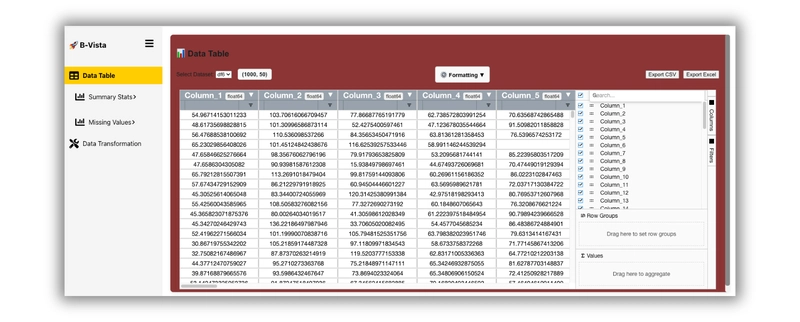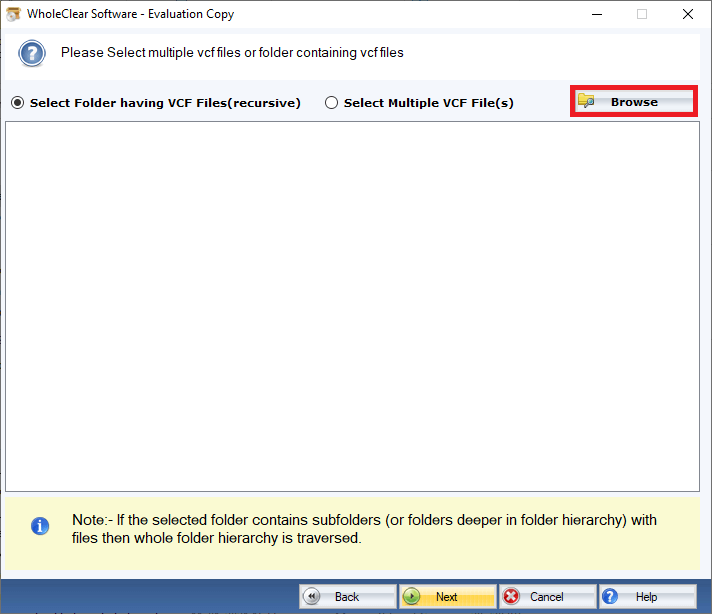Streamline Your EKS Deployments with NGINX Ingress: A Comprehensive Guide
Streamline Your EKS Deployments with NGINX Ingress: A Comprehensive Guide ## Streamline Your EKS Deployments with NGINX Ingress: A Comprehensive Guide Managing multiple applications in Amazon EKS (Elastic Kubernetes Service) can become complex, especially when dealing with load balancing. Assigning a dedicated LoadBalancer to each application quickly becomes expensive and unwieldy. This is where the power of an NGINX Ingress Controller shines. Let's explore how it simplifies your EKS architecture and boosts efficiency. Why Choose NGINX Ingress for Your EKS Cluster? Imagine juggling multiple load balancers, each requiring individual configuration and management. That's a recipe for complexity and increased costs. NGINX Ingress acts as a central traffic manager, routing requests to your various applications through a single LoadBalancer. This centralized approach offers significant advantages: Cost Savings: Reduce expenses by using a single LoadBalancer instead of many. Simplified Architecture: A cleaner, more manageable infrastructure. Enhanced Scalability: Easily handle growing traffic demands. Flexibility: Support for both HTTP and TCP routing. What You'll Learn This guide will walk you through setting up and configuring NGINX Ingress in your EKS cluster, covering: Deploying NGINX Ingress using Helm Configuring HTTP routing with Ingress resources Enabling TCP routing for non-HTTP services (like databases) Integrating with Cloudflare for DNS management and enhanced security Prerequisites: Getting Started Before we begin, ensure you have the following: An active EKS cluster: With kubectl, eksctl, and Helm installed. A Cloudflare account: With a domain you wish to manage. Applications deployed in Kubernetes: Ready to receive traffic. Installing the NGINX Ingress Controller with Helm Helm is a package manager for Kubernetes, simplifying the deployment process. Let's install the NGINX Ingress Controller: Add the Ingress Nginx Helm repository: helm repo add ingress-nginx https://kubernetes.github.io/ingress-nginx Install the Ingress Controller: This command creates a namespace called ingress-nginx and deploys the controller as a LoadBalancer service. *Code explanation:* bash helm install ingress-nginx ingress-nginx/ingress-nginx --create-namespace --namespace ingress-nginx --set controller.service.type=LoadBalancer This creates the necessary Kubernetes resources. The `--set controller.service.type=LoadBalancer` option is crucial; it ensures AWS creates a LoadBalancer for your Ingress Controller. ### Obtaining Your ELB Endpoint and Configuring Cloudflare DNS 1. **Get the LoadBalancer's External IP:** bash kubectl get svc -n ingress-nginx Locate the `EXTERNAL-IP` address for the `ingress-nginx-controller` service. This is your LoadBalancer's public IP address. 2. **Configure Cloudflare DNS:** Add a new DNS record in your Cloudflare dashboard: * **Type:** A (or CNAME, depending on your preference) * **Name:** Your desired subdomain (e.g., `app`) * **Target:** The `EXTERNAL-IP` you obtained in the previous step. * **Proxy:** Choose "DNS only" for performance or "Proxied" for added security. ### Configuring HTTP Routing with Ingress Resources Now let's configure HTTP routing. This example routes traffic to a service named `your-service` running on port 8080. Replace placeholders with your actual values. Create a file named `ingress.yaml` with the following content: Code explanation: apiVersion: networking.k8s.io/v1 kind: Ingress metadata: name: app-ingress annotations: nginx.ingress.kubernetes.io/rewrite-target: / spec: ingressClassName: nginx rules: - host: app.yourdomain.com http: paths: - path: / pathType: Prefix backend: service: name: your-service port: number: 8080 Apply the configuration: *Code explanation:* bash kubectl apply -f ingress.yaml This sets up host-based routing; all requests to `app.yourdomain.com` will be directed to `your-service`. ### Adding TCP Support for Non-HTTP Services NGINX Ingress also handles TCP traffic. Let's enable TCP routing for a PostgreSQL database service running on port 5432: 1. **Create a ConfigMap:** This ConfigMap defines the mapping between TCP ports and Kubernetes services. Code explanation: apiVersion: v1 kind: ConfigMap metadata: name: tcp-services namespace: ingress-nginx data: "5432": "your-namespace/postgres-service:5432" Update the NGINX Ingress Controller: This step tells the controller to use the ConfigMap. *Code explanation:* bash helm upgrade ingress-nginx ingress-nginx/ingress-nginx --namespace ingress-nginx --set controller.extraArgs.tcp-services-configmap=ingress-nginx/tcp-services 3. **Expose the Port on the LoadBalancer:** Edit the LoadBalancer service to exp

Streamline Your EKS Deployments with NGINX Ingress: A Comprehensive Guide
## Streamline Your EKS Deployments with NGINX Ingress: A Comprehensive Guide
Managing multiple applications in Amazon EKS (Elastic Kubernetes Service) can become complex, especially when dealing with load balancing. Assigning a dedicated LoadBalancer to each application quickly becomes expensive and unwieldy. This is where the power of an NGINX Ingress Controller shines. Let's explore how it simplifies your EKS architecture and boosts efficiency.
Why Choose NGINX Ingress for Your EKS Cluster?
Imagine juggling multiple load balancers, each requiring individual configuration and management. That's a recipe for complexity and increased costs. NGINX Ingress acts as a central traffic manager, routing requests to your various applications through a single LoadBalancer. This centralized approach offers significant advantages:
- Cost Savings: Reduce expenses by using a single LoadBalancer instead of many.
- Simplified Architecture: A cleaner, more manageable infrastructure.
- Enhanced Scalability: Easily handle growing traffic demands.
- Flexibility: Support for both HTTP and TCP routing.
What You'll Learn
This guide will walk you through setting up and configuring NGINX Ingress in your EKS cluster, covering:
- Deploying NGINX Ingress using Helm
- Configuring HTTP routing with Ingress resources
- Enabling TCP routing for non-HTTP services (like databases)
- Integrating with Cloudflare for DNS management and enhanced security
Prerequisites: Getting Started
Before we begin, ensure you have the following:
-
An active EKS cluster: With
kubectl,eksctl, and Helm installed. - A Cloudflare account: With a domain you wish to manage.
- Applications deployed in Kubernetes: Ready to receive traffic.
Installing the NGINX Ingress Controller with Helm
Helm is a package manager for Kubernetes, simplifying the deployment process. Let's install the NGINX Ingress Controller:
- Add the Ingress Nginx Helm repository:
helm repo add ingress-nginx https://kubernetes.github.io/ingress-nginx
-
Install the Ingress Controller: This command creates a namespace called
ingress-nginxand deploys the controller as a LoadBalancer service.
*Code explanation:*
bash
helm install ingress-nginx ingress-nginx/ingress-nginx --create-namespace --namespace ingress-nginx --set controller.service.type=LoadBalancer
This creates the necessary Kubernetes resources. The `--set controller.service.type=LoadBalancer` option is crucial; it ensures AWS creates a LoadBalancer for your Ingress Controller.
### Obtaining Your ELB Endpoint and Configuring Cloudflare DNS
1. **Get the LoadBalancer's External IP:**
bash
kubectl get svc -n ingress-nginx
Locate the `EXTERNAL-IP` address for the `ingress-nginx-controller` service. This is your LoadBalancer's public IP address.
2. **Configure Cloudflare DNS:** Add a new DNS record in your Cloudflare dashboard:
* **Type:** A (or CNAME, depending on your preference)
* **Name:** Your desired subdomain (e.g., `app`)
* **Target:** The `EXTERNAL-IP` you obtained in the previous step.
* **Proxy:** Choose "DNS only" for performance or "Proxied" for added security.
### Configuring HTTP Routing with Ingress Resources
Now let's configure HTTP routing. This example routes traffic to a service named `your-service` running on port 8080. Replace placeholders with your actual values.
Create a file named `ingress.yaml` with the following content:
Code explanation:
apiVersion: networking.k8s.io/v1
kind: Ingress
metadata:
name: app-ingress
annotations:
nginx.ingress.kubernetes.io/rewrite-target: /
spec:
ingressClassName: nginx
rules:
- host: app.yourdomain.com
http:
paths:
- path: /
pathType: Prefix
backend:
service:
name: your-service
port:
number: 8080
Apply the configuration:
*Code explanation:*
bash
kubectl apply -f ingress.yaml
This sets up host-based routing; all requests to `app.yourdomain.com` will be directed to `your-service`.
### Adding TCP Support for Non-HTTP Services
NGINX Ingress also handles TCP traffic. Let's enable TCP routing for a PostgreSQL database service running on port 5432:
1. **Create a ConfigMap:** This ConfigMap defines the mapping between TCP ports and Kubernetes services.
Code explanation:
apiVersion: v1
kind: ConfigMap
metadata:
name: tcp-services
namespace: ingress-nginx
data:
"5432": "your-namespace/postgres-service:5432"
- Update the NGINX Ingress Controller: This step tells the controller to use the ConfigMap.
*Code explanation:*
bash
helm upgrade ingress-nginx ingress-nginx/ingress-nginx --namespace ingress-nginx --set controller.extraArgs.tcp-services-configmap=ingress-nginx/tcp-services
3. **Expose the Port on the LoadBalancer:** Edit the LoadBalancer service to expose port 5432.
Code explanation:
kubectl edit svc ingress-nginx-controller -n ingress-nginx
Add the following under the ports section:
*Code explanation:*
yaml
- name: postgres port: 5432 targetPort: 5432 protocol: TCP
Now, TCP connections to port 5432 on your LoadBalancer will be routed to your PostgreSQL service.
### Routing Overview: A Summary
The NGINX Ingress Controller acts as a reverse proxy, receiving incoming requests and forwarding them to the appropriate backend service based on the host, path, and port. This intelligent routing simplifies traffic management significantly.
### Tips and Best Practices
* **Use `ingressClassName: nginx`:** This ensures your Ingress resources use the NGINX controller.
* **Implement TLS/SSL:** Use cert-manager for automated certificate management and secure your applications.
* **Utilize Namespaces:** Isolate applications for better organization and security.
* **Annotate Ingresses:** Leverage annotations for advanced features like caching and request rewriting.
### Conclusion: Simplified EKS Management
By leveraging the power of NGINX Ingress, you can significantly simplify the management of your EKS deployments. A single LoadBalancer, combined with the flexibility of HTTP and TCP routing, provides a cost-effective and scalable solution for all your application needs. Integrate with Cloudflare for enhanced security and a robust DNS setup, and you'll have a production-ready architecture optimized for efficiency.
---









































































































































































![[The AI Show Episode 144]: ChatGPT’s New Memory, Shopify CEO’s Leaked “AI First” Memo, Google Cloud Next Releases, o3 and o4-mini Coming Soon & Llama 4’s Rocky Launch](https://www.marketingaiinstitute.com/hubfs/ep%20144%20cover.png)




















































































































































































.jpg?width=1920&height=1920&fit=bounds&quality=70&format=jpg&auto=webp#)






















































































_Olekcii_Mach_Alamy.jpg?width=1280&auto=webp&quality=80&disable=upscale#)













































































































![Apple Drops New Immersive Adventure Episode for Vision Pro: 'Hill Climb' [Video]](https://www.iclarified.com/images/news/97133/97133/97133-640.jpg)

![Most iPhones Sold in the U.S. Will Be Made in India by 2026 [Report]](https://www.iclarified.com/images/news/97130/97130/97130-640.jpg)
![Apple to Shift Robotics Unit From AI Division to Hardware Engineering [Report]](https://www.iclarified.com/images/news/97128/97128/97128-640.jpg)


































































































































